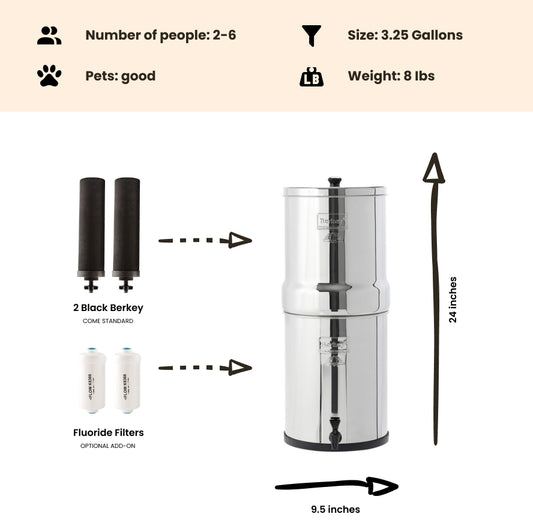
Scientists Develop New Method to Estimate Health Risks from PFAS Chemicals in Drinking Water
By Dan DeBaunShare
A team of researchers have developed a method that will enable public health officials to determine the health risks posed by hormone-disrupting PFAS chemicals in drinking water. This new method was used to assess the health risk associated with exposure to PFAS in drinking water by analyzing levels of PFAS exposure and associated health issues of a community living in Ronneby, Sweden, whose water supply had high levels of PFAS contaminants originating from firefighting foam. The study, which was recently published in the scientific journal Environmental Health Perspectives, found that women exposed to PFAS in drinking water faced a high risk of lowered thyroid hormone (triiodothyronine) levels.
What Are PFAS?
Per- and polyfluoroalkyl chemicals, more commonly known as PFAS, are used to manufacture a wide range of household and industrial products, including non-stick cookware and fire-fighting foam. These chemicals persist in the environment, where they pose both an ecological and human health threat. PFAS can have several adverse health effects, including weakening the immune system; lowering birth weights; and altering thyroid levels, resulting in hormonal imbalances. It has also been linked to increased risk of tooth decay in children. PFAS has been detected in the drinking water supply of cities across 49 US states, including major metropolitan areas that supply hundreds of thousands of consumers. Communities living in close proximity to firefighting training sites at most at risk. Consequently, there is an urgent need to examine the potential health risks that these populations have been exposed to.
"It's not enough to know that the levels exceed a limit value," says Antero Silva, a doctoral student at the Institute of Environmental Medicine at Karolinska Institutet in Sweden and lead author of the study. "We wanted to develop a method that describes how great the risk is while dealing with the uncertainty of the data."
How Does PFAS Impact the Human Body?
The environmental and health issues posed by PFAS were recently highlighted in Hollywood movie, Dark Waters — a true life drama based on the expose of Robert Bilott (portrayed by Mark Ruffalo) who exposed how the US industrial sector has for decades been covering up the environmental and health hazards posed by PFAS.
Back in Sweden where the study was conducted, residents of Ronneby — one of the most adversely affected communities — exposed to PFAS has filed a class action suit against their municipal water supplier.
How PFAS Affects the Thyroid
For the study, the scientists identified how PFAS chemicals affect the thyroid hormone triiodothyronine (T3), while also accounting for sensitivity differences between the participants. Examining exposure data for the town of Ronneby, the research team calculated the number of residents that were likely impacted and estimated that roughly 4% of women residents had PFAS levels in their blood that were sufficient enough to cause their T3 levels to drop by 10%.
"Using a large number of computer simulations we can describe the risk in terms of probability," explains Antero Silva. "Our results show that it is mainly women who risk being affected and that those who have lived a long time in Ronneby are more likely to have reduced levels of the thyroid hormone T3."
The thyroid hormone is responsible for controlling the body's metabolism. People who have an underactive thyroid (a condition known as hypothyroidism) can suffer from tiredness, difficulty concentrating and depression. The thyroid hormone also plays a crucial role in fetal development in the mothers womb. In 2019, 472,000 Swedish residents were given medication to treat low thyroid hormone levels, 82% of which were women. Rather than focusing on whether exposure to PFAS increases the likelihood of disease, the focus of this study centers more around whether certain individuals in a population (i.e. women) are more likely to have disrupted hormone levels when exposed to PFAS in drinking water. Consequently, the results only provide an indication of risk at population level, rather than pinpoint which individuals within the population are affected.
The health risks posed by chemical contaminants in drinking water are typically evaluated by comparing levels of exposure with safety standard limitation values. However, this may provide a false sense of security that their is a line separating water that is safe to drink from that which could potentially be harmful. The authors hope that this new method will enable public health authorities to evaluate the health risks more cautiously while taking note of uncertainty and variation within the data.
More info on PFAS can be found here. Journal Reference Antero Vieira Silva, Joakim Ringblom, Christian Lindh, Kristin Scott, Kristina Jakobsson, Mattias Öberg. A Probabilistic Approach to Evaluate the Risk of Decreased Total Triiodothyronine Hormone Levels following Chronic Exposure to PFOS and PFHxS via Contaminated Drinking Water. Environmental Health Perspectives, 2020; 128 (7): 076001 DOI: 10.1289/EHP6654
-
Regular price $234.00 USDRegular priceUnit price / per
-
Regular price $327.00 USDRegular priceUnit price / per
-
Regular price From $367.00 USDRegular priceUnit price / per
-
Regular price From $408.00 USDRegular priceUnit price / per
-

 Sold outRegular price From $451.00 USDRegular priceUnit price / per
Sold outRegular price From $451.00 USDRegular priceUnit price / per -
Regular price From $478.00 USDRegular priceUnit price / per
-
Regular price $332.50 USDRegular priceUnit price / per
$350.00 USDSale price $332.50 USDSale

Dan DeBaun is the owner and operator of Big Berkey Water Filters. Prior to Berkey, Dan was an asset manager for a major telecommunications company. He graduated from Rutgers with an undergraduate degree in industrial engineering, followed by an MBA in finance from Rutgers as well. Dan enjoys biohacking, exercising, meditation, beach life, and spending time with family and friends.
~ The Owner of Big Berkey Water Filters


















